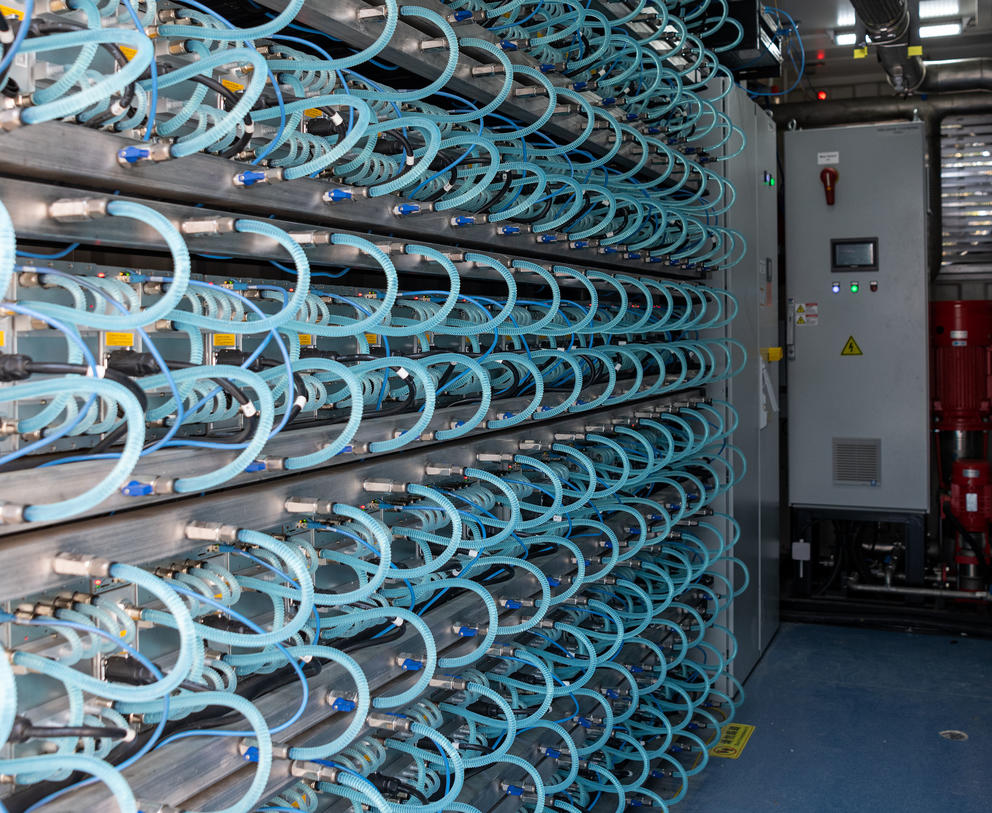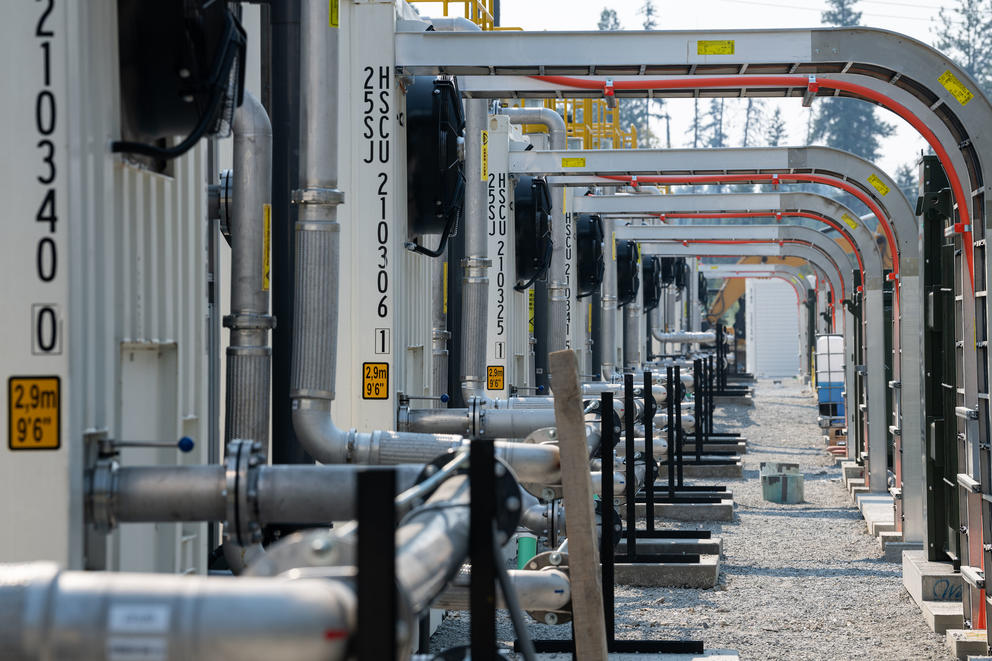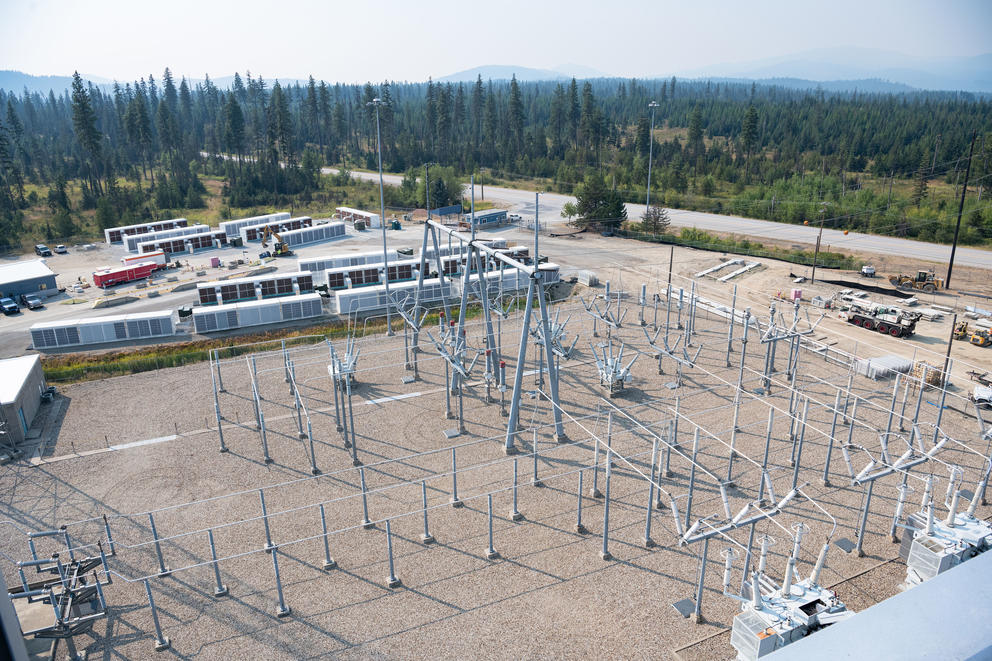Across the country, cryptocurrency miners are striving to remake the image of their industry in the public’s and policymakers’ minds: from flighty to reliable, from all about profit to altruistic, from energy-guzzling and emissions-heavy to climate-conscious.
InvestigateWest (invw.org) is an independent news nonprofit dedicated to investigative journalism in the Pacific Northwest. This story was made possible with support from the Sustainable Path Foundation.
“We want to be allies, not adversaries,” said Jay Jorgensen, founder and CEO of GeoBitmine, the Idaho company. “Allies of the earth, of energy, of energy production, of the community we’re in.”
But environmental groups and researchers are skeptical. They point to the industry’s track record of contributing to greenhouse-gas emissions and e-waste, as documented by federal agencies and independent researchers, and to the general volatility of crypto’s first decade-plus of existence.
“I think there’s been a big shift in the public relations aspect,” said Nick Thorpe, climate and energy advocate with Earthjustice, an environmental law nonprofit that produced a sweeping report in 2022 on the crypto mining industry’s environmental liabilities.
“[They’re] attempting to say all of the various talking points, like ‘We incentivize renewable energy … We’re near a wind farm so therefore we’re getting 100% clean energy,’ which, frankly, is incredibly misleading and very much like greenwashing.”
Voices from both camps are clamoring for the ear of state and federal policymakers who are just beginning to regulate the nascent industry. The ongoing question is whether crypto mining will hinder or help transitioning the country away from fossil fuels and stabilizing its electrical infrastructure.
Based on the industry’s history, even some crypto miners are striking a cautious tone.
“[With] the pace of movement, plus the frankly irresponsible nature of many of the participants, it would be illogical for policymakers to not be concerned,” said Malachi Salcido, a Wenatchee-based bitcoin miner with a decade of experience in the industry. “The way that will change is not by arguing or entering into conflict. It’s by managing loads responsibly over time, taking strategic long-term positions and earning trust.”
Volatility and climate toll
Crypto mining faces growing scrutiny about its climate impacts.
Concerns center mostly on the process of bitcoin mining, which uses a system called “proof of work.” It is energy-intensive by design, requiring computers to solve thousands of equations as quickly as possible in the hopes of solving the correct sequence to earn bitcoin.
A 2022 Biden administration report stated the industry consumed about 1% of the electricity used in the country, producing between 25 million and 50 million metric tons of carbon dioxide annually.
Like data centers, crypto mining operations also use water as coolant and churn through computers every year. That same White House report stated that crypto mining was responsible for e-waste output equivalent to that produced by the entire nation of the Netherlands.
But some crypto miners have been innovating and pushing back, arguing that the industry has the ability to do better for the planet.
Jorgensen is among them. He’s been involved with the bitcoin mining industry for two and a half years, beginning as a contractor. Now he’s gathering investors to launch GeoBitmine, which he plans to set up in Idaho Falls this spring.
Jorgensen refers to GeoBitmine as an “agrotech company” rather than a bitcoin-mining operation. He said his focus with most of the five-acre facility is to build a greenhouse heated by the servers working away at mining bitcoin. That can employ at least 30 people initially, he estimated.
In short, he said, he wants to expand upon the mission of bitcoin mining.
“I’m a practical guy who wants to solve problems and do it the easiest way possible,” he said. “We have problems with water consumption, food production, and our energy grid needs to be stabilized. I found an opportunity where all those things can be put together.”
GeoBitmine aims to be carbon-neutral by the end of 2023, Jorgensen said. His plan relies on a combination of 75% renewable power supply provided by PacifiCorp; energy savings from repurposing server heat through the greenhouse; and carbon sequestration through the crops grown in the greenhouse.
In response to questions about the value of using so much energy to mine bitcoin, Jorgensen points to other uses of electricity such as Netflix streaming, which, according to one 2020 estimate, uses about 94 terawatt hours globally each year.
“You’re just being prejudiced against something that uses less than 1% of the grid,” he said. “People fear what they don’t understand.”
Salcido, CEO of Salcido Enterprises, has watched many mining operations rise and fall as the value of bitcoin fluctuated wildly during his 10 years in the business, which justifies the caution from utilities and policymakers.
Given the ongoing volatility of the industry, Salcido said, he doesn’t fault utility companies for setting higher rates for crypto customers in order to protect their assets, or lawmakers for being cautious. He believes it’s too early for crypto miners to try to burnish their environmental credentials in the minds of the public.
“True sustainability requires a lot of strategic, thoughtful planning and execution, not lurching,” Salcido said. “That, coupled with the fact that crypto as a new, emerging, evolving industry has a get-rich-quick kind of attribute, means most people don’t see it as sustainable. And in these early market cycles, it’s not acting sustainable.”
With time and experience, though, he still believes that it can become so.
A bet on potential?
An infamous crypto mining project in upstate New York that reopened a mostly defunct coal plant to power its servers was what spurred Earthjustice’s work around crypto mining.
Thorpe, Earthjustice’s senior associate, became involved as environmental impacts of crypto mining “became a bigger and bigger issue across the U.S.” As the nonprofit studied the industry throughout 2022, it found several other examples of the industry reopening fossil-fuel plants or keeping them online.
Using public filings with utility and financial regulators, investor presentations and media reports, the nonprofit vetted claims that crypto mining is embracing greener practices and mitigating its environmental toll. In partnership with the Sierra Club, Earthjustice compiled that research to present to federal policymakers.
They describe their research as “the first attempt to comprehensively document the explosive growth of cryptocurrency mining in the United States and examine how this industry is impacting utilities, energy systems, emissions, communities and ratepayers.”
Earthjustice found that even when mining operations claimed to be drawing directly from renewable projects, “most mining facilities draw power from the grid — meaning their electricity is generated by whatever existing energy is in place in the region, or is contracted by their utility.”
“Increased load on any grid means an increased incentive to run that coal plant which supposedly was going to retire,” Thorpe said. Additionally, “I haven’t seen any example of crypto building out additional clean-energy projects solely for their operations.”
Crypto miners also say the industry can contribute in other ways due to its flexibility in power usage. Unlike data centers, crypto mining operations can stop running their computers to ease pressure on the grid during times of peak demand. Or they can ramp up usage during times when energy generation exceeds the grid’s current capacity.
States have been relying mostly on subsidies or lower rates from utilities to incentivize crypto miners to disconnect during surges, rather than on mandates that require them to.
Jorgensen said that tactic is effective: It makes financial sense for miners to avoid heightened electricity costs during peak demand, and to receive the tax benefits or rate benefits that come from disconnecting for a while.
Environmental advocates point out that ratepayers subsidize those incentives for crypto miners, however, without getting any benefit from sharing the grid with those operations.
Earthjustice also said it found many more instances of power companies getting stuck holding the bag for investments they made to serve crypto operations, only to have those same operations shutter or leave town. The group noted instances in Kentucky, Arkansas, Nebraska and Washington.
Thorpe acknowledged that the industry is still talking about ways to improve. But for climate groups, the past and present make for more compelling arguments.
“We are focused on what’s happening right now,” he said. “Fossil- fuel plants are being run to exclusively mine bitcoin. Proof of work is designed to be energy-intensive. Until that changes, I don’t see a future where it actually could follow the models of other companies like Google and Microsoft that have made commitments to run on carbon-free electricity.”
InvestigateWest (invw.org) is an independent news nonprofit dedicated to investigative journalism in the Pacific Northwest. This story was made possible with support from the Sustainable Path Foundation.





